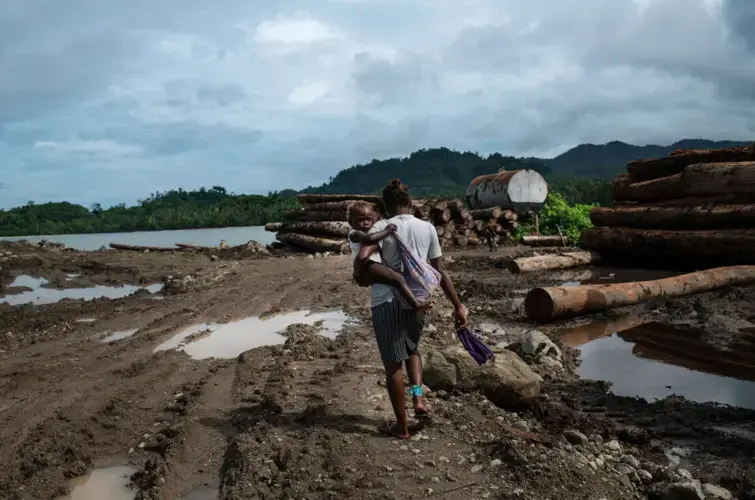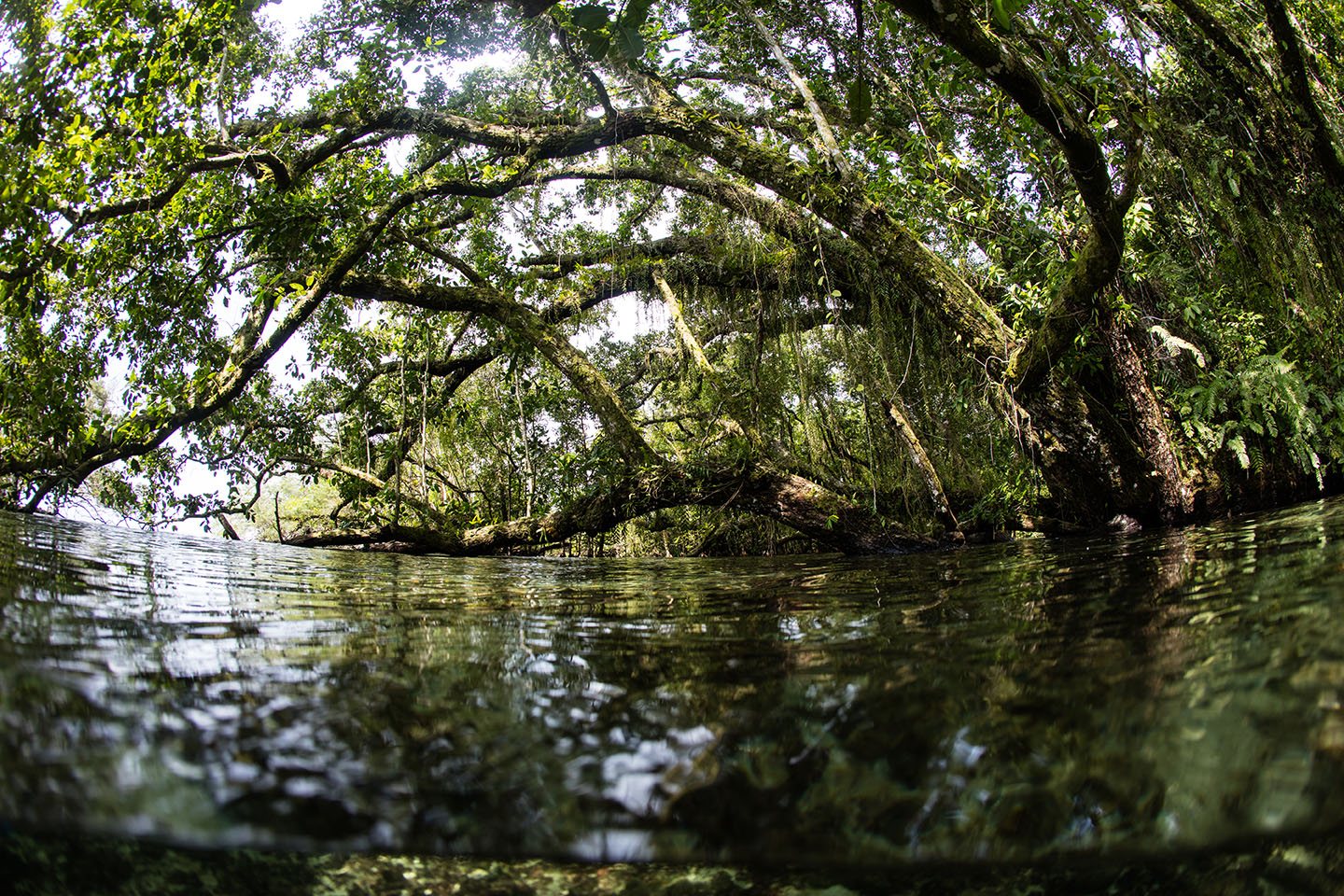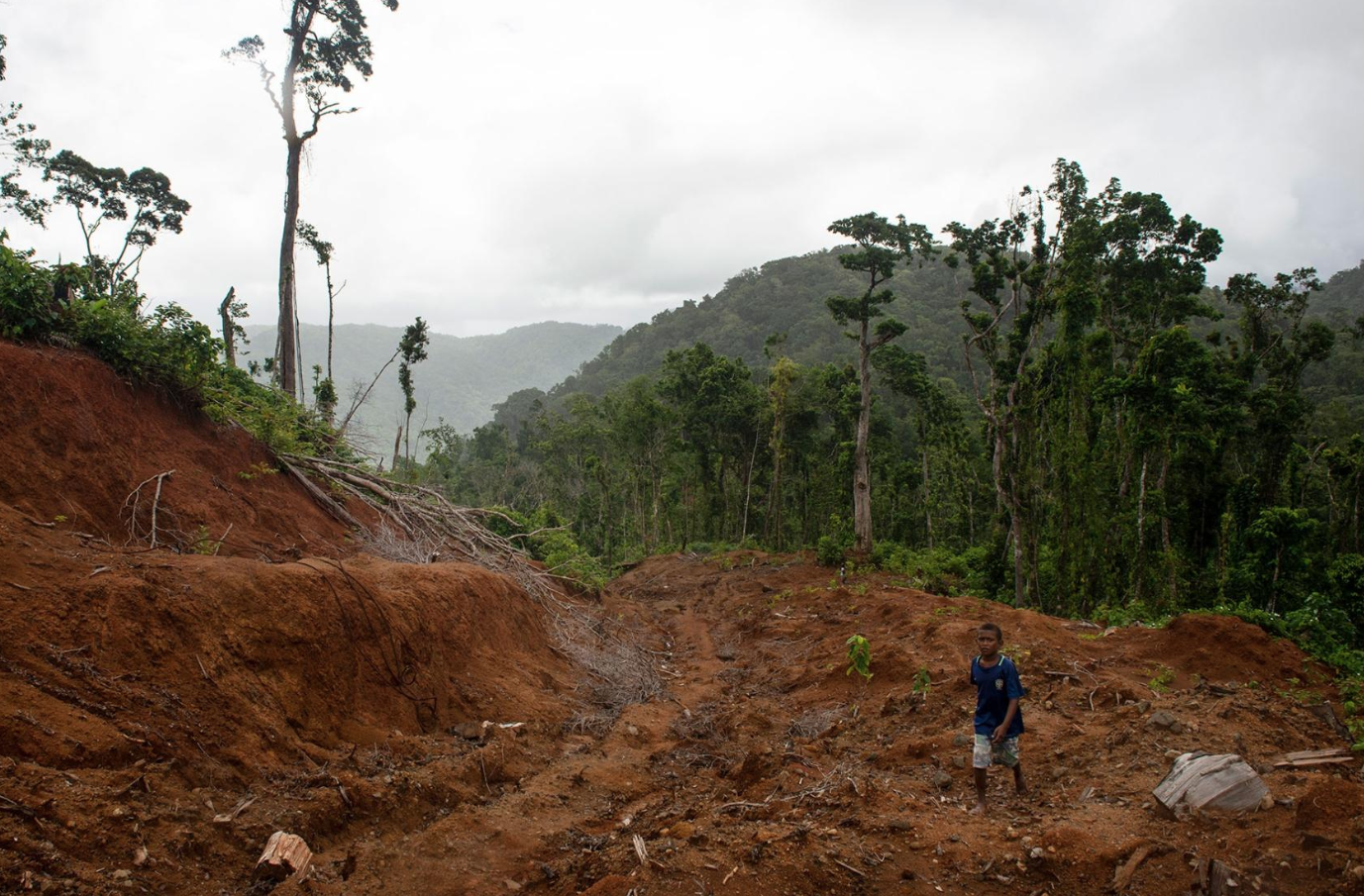
SOLOMON ISLANDS — It was mid-February 2018 when villagers in the Solomon Islands community of Marasa noticed the rivers had begun to turn red. The wet season was almost over and heavy rain fell over the forested mountain ridge, which rises up from the coast to split Marasa from the rest of the island of Guadalcanal. Soon, the waters were a thick rust color that everyone recognized as the soil that started 650 feet up the slopes, but had never dissolved and flowed out to sea before.
The rivers burst their banks not long after, flooding the flatland where the coconuts, mangoes, and yams grew, and laying down impermeable clay that made the earth unusable.
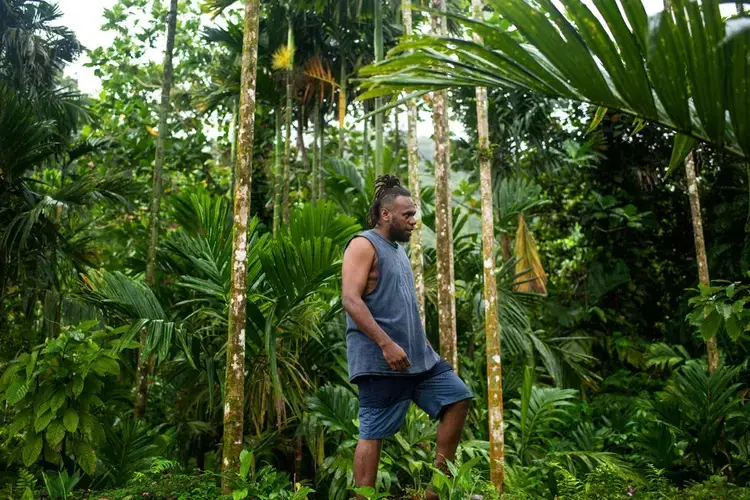
So the villagers walked to the little patches of cell phone reception and called Philip Manakako, a son of Marasa who lived 30 miles across the mountains in Honiara, the capital. His father, Philip Senior, told him that there were no more fish in the rivers. The water was making children sick, an uncle said. A woman who lived nearby explained how her plants all died three days after the floods first came, and the ground around them smelled of petrol.
Up on the ridge, a Malaysian logging company named Gallego Resources had begun carving great scores through the forest— its men felling the tall, grey-barked kwila and the akwa strung with fruit, then dragging them off the slopes for export, leaving nothing to stop the rains from taking the topsoil.
Manakako felt stung when he found out. The mountains had been untouched and abundant, covered in trees that as a child, he thought of as having grown there since creation. Back then, he and his cousins would follow the cascading streams uphill for a few afternoon hours and come back with pounds of shrimp for dinner.
The Marasans knew what would happen next. The forests they relied on for food, water, and timber would be destroyed. And without the trees, they would have to eat imported rice and build their houses with lumber-yard wood bought with the tiny sums the logging firms paid communities for every exported shipment. Teenagers might take dangerous jobs and young women would be coerced into exploitative temporary marriages with foreign workers. There would probably be a spike in alcoholism too, and with it, violence. “The life,” as many of Manakako’s relatives described it, would be over.
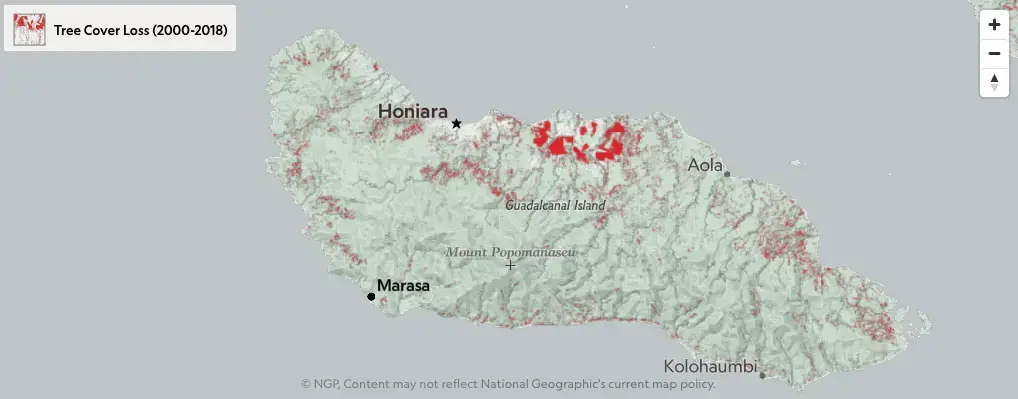
They knew this because it had already happened most of the way along the Guadalcanal coast—and across nearly every other part of the archipelago since logging began soon after independence from the UK in 1978. Foreign companies, mostly Chinese and Malaysian, are now stripping trees at more than 19 times the sustainable rate, according to Global Witness, making Solomon Islands the second largest supplier of tropical logs to China.
Looking for a Savior
Fly in and you see the damage from the air—cleared patches in the blanket of green connected by a network of dirt roads. All along the coastline are the log ponds, mud ramps where trees are loaded onto barges and towed to cargo vessels offshore.
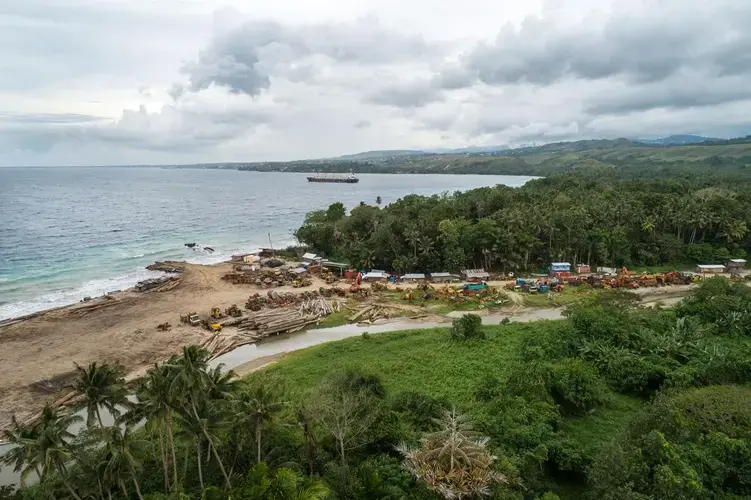
The people of Marasa had called Manakako because he understood logging and, after two years with the local branch of Transparency International, he understood Solomon Islands bureaucracy too. If anyone could save their forest from Gallego, they thought, it would be him.
Manakako is now 31 and works in the anti-corruption branch of the prime minister’s office. He wears his hair in dreadlocks with the sides neatly shaved and favors American sports jerseys in his downtime. He stands out when he returns to Marasa, but remains proud of his ancestry and his tribe. He talks often of local legends, brings back fruit from the village for his wife and two young children and chews the traditional stimulant betel nut (though only at weekends).
“It’s about the warrior spirit still,” he says from behind his desk in Honiara. “I’m fighting in a different way for my land and to make the right decisions for my people.”
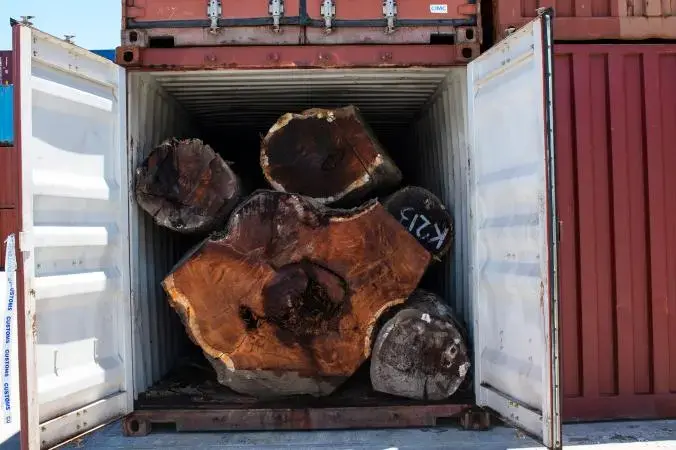
When Gallego arrived in February, Manakako was out of work after completing a postgraduate degree in Fiji. He quickly turned his free time to investigating the firm.
Timber is by far Solomon Islands’ largest export and there is a legally enshrined process of granting logging licenses. Endemic corruption allows firms to circumvent nearly all of it. With an undeveloped economy that offers few other sources of income, many local residents acquiesce for what little money trickles down. If they don’t, police patrol boats are sometimes sent to threaten or detain any opposition.
It happens shamelessly. Last year, Tabilo Timber began operations near a tributary to Honiara’s main water source and quickly polluted it with so much silt that mains supplies had to be shut off after every downpour.
“When it gets bad, we say it looks like [chocolate and malt beverage] Milo,” Solomon Water Strategic Manager Ray Andresen says on a September morning at a pumping station above the capital. That week had been relatively dry, so the stream was only a milky white that chlorination at least made drinkable.
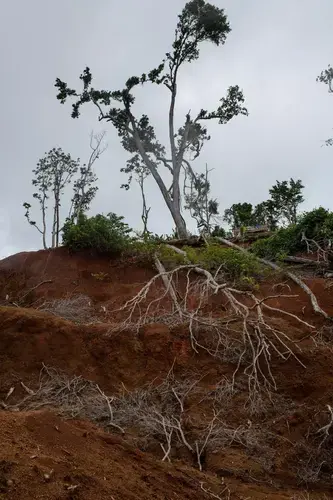
Five miles into the jungle two springs merged and flowed downhill. One ran clear. The other, coming from close to the Tabilo site, was that same milky color. This obvious culpability had not made stopping the firm easy, says Solomon Water General Manager Ian Gooden, who had repeatedly made different branches of government aware that the law was being broken, but to no effect.
Gooden sounded faintly exhausted, common among those attempting to protect the country’s forests. Ruth Liloqula, executive director of Transparency Solomons and Manakako’s old boss, says corruption has aligned government ministries and the judiciary with the companies. She has not even been able to stop her own community from being devastated.
“It's a hopeless case,” she sighs toward the end of another day in her Honiara office. “Because there really is nothing there to help anyone.”
Going to Battle
For an average Solomon Islands citizen, the legal process to safeguarding land is both impossibly complex and impossibly costly. This is especially true of remote areas, and most of Solomon Islands is very remote indeed. Marasa, which consists of five traditional houses and a church, is one of a cluster of villages set back from a black stone beach with nothing but 1,000 miles of sea and tradewinds between it and Queensland, Australia. Despite its proximity to the capital, the government is near-invisible there.
There was once a road leading seven miles inland, a ferry service and an airfield operating a single weekly flight. That all stopped during the ethnic violence that began in 1998, when Manakako remembers hiding in the forest as police fired their machine guns into the hills and militants once beheaded a group of men down on the beach.

Now, there’s only the carbon fiber banana boats that set off 40 miles northwest from a beach near the end of the Honiara road on mornings when the weather holds. Fuel is expensive so people load up until the gunnels are inches from the waves, then bounce along in the swell, shadowing the steep coastline with its log ponds and patches of exhausted forest.
Even with his background, it was not easy for Manakako to find out how Gallego was operating. In a series of government buildings, the officials he sought were on perpetual lunch breaks, stuck in meetings, or just refused to talk to him. He sat for hours at the Forestry Ministry, refusing to leave until they gave him the papers he wanted. (The Forestry Ministry did not reply to multiple requests for comment.)
Gallego turned out to be operating under a license granted in 2015 for a neighboring area. The required local consultations, environmental impact reports, and site inspections all appeared to have been neglected. They were violating rules on operating close to tributaries too, and had offered one village only an empty water tank by way of compensation for the damage they had caused.
Equipped with this information, Manakako lodged appeals and applied for stop notices. And every weekend, he found space on a boat back to Marasa. For his plan to work, he needed the community behind him, and some were still tempted by logging money.
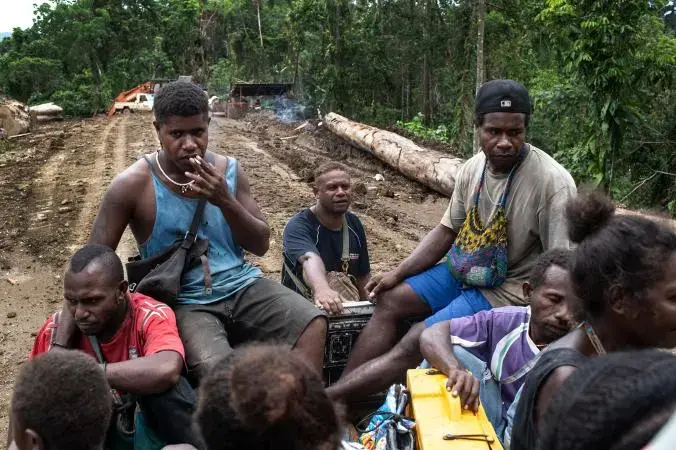
He usually caught up with his elders after they had all knelt together on palm mats at the little village church with its altar of flowers in polished WWII artillery shell casings and its diving tank bell. It was culturally difficult for a young man to lead in this way, and especially to contradict those who approved of Gallego, but he sat and talked and chewed betel nut with them until they were persuaded.
Manakako had to calm down the “boys” though, defiant youths as well as men who had fought during the ethnic tensions and were only recently out of jail. Some of them favored attacking the Gallego camp to burn the machinery and had already argued with the logging workers and stolen some chainsaws.
“We controlled the people that were ex-militants,” Manakako says. “They got the message that it should be done above board.”
He cultivated an information network, from middle-aged women to young marijuana smokers, to find out what was happening on the ridge. Most important was John Selwyn, an old friend from a village on the mountain where a number of people had taken jobs as security for Gallego. They wanted the company there whatever the damage below.
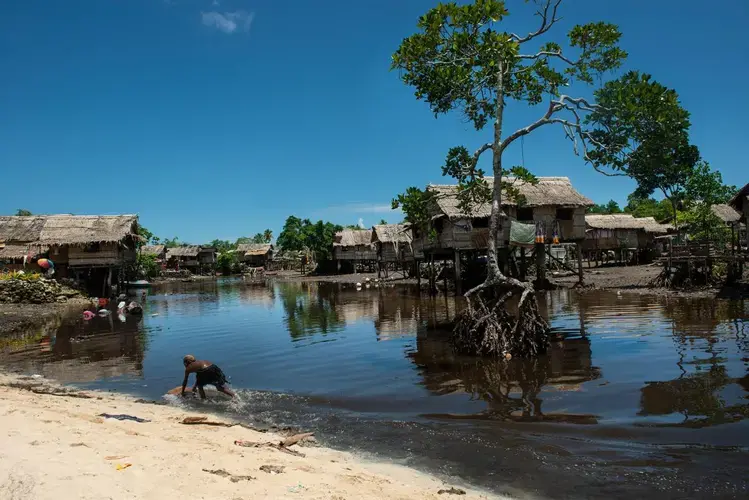
Selwyn counted the laden barges going out from the log pond. He took note of where Gallego was felling, when they were particularly busy, when their shipments of fuel arrived and when one leaked into a stream. He was there too when Manakako went to a meeting that included company representatives and told them that what they were doing was against the law and that he was going to stop them. The company men just laughed.
Manakako kept working anyway, walking from village to village to gather a petition of 795 names accompanied by signatures and a few thumbprints.
In Honiara he wrote an article calling for Gallego to be investigated. He wrote letters too and met with company leaders. They tried to buy him off, he says, offering huge sums for a man with no job and a family to feed.
Manakako stayed ahead of them, documenting everything in a vast trove of papers, Facebook screenshots, and emails. “I had all my Machiavellian plans,” he chuckles. “I recorded all my meetings with them.”
The Ministry of Environment finally issued a stop notice in August 2018. But Gallego continued logging. It issued another a few weeks later, which was also ignored, at first. But as the year came to a close, the pressure on the company mounted. Gallego finally halted, then withdrew its machinery and its workers for good. The company did not respond to requests for comments as to why it left.
A Slow Healing
It’s late September 2019 when Manakako makes another weekend journey home, starting just after five-thirty in his parent’s boat and joining a half dozen more strung out in the blue dawn light. Four hours later he’s helping unload cargo at the mouth of a river that Philip Senior complained was still dramatically shallower because of the logging silt. A few tiny fish cluster again in the cloudy waters, darting away at approaching footsteps.
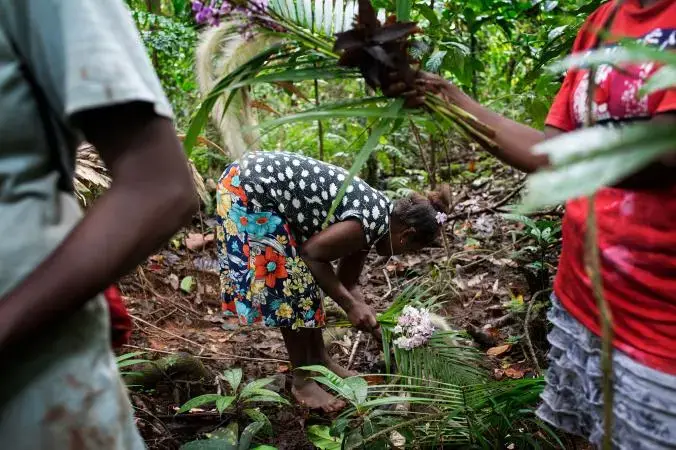
Manakako greets friends, cousins and uncles in the village. All seem happy with what he has managed to do.
Like the river, though, the farmland might not recover for years, says Esmi Mazini, the woman who had phoned to tell him that her plants died in the floods.
“It’s very sad for us,” she says. “We’ve been cultivating this garden for years. And now we have to leave it.”
Men from the area who had worked with Gallego say the community is colder toward them now. Up at Selwyn’s village there is talk of trying to bring another company to the area. There, the Marasans’ fears of what logging would do had come to pass.
“Every day there is fighting, and drinking,” Selwyn says. “They got money and they used it for alcohol only.”
After church on Sunday, Manakako and Selwyn make the climb up to the logging site for the first time since Gallego left. Manakako expects there to be little trace of the work. In land this fertile and well-irrigated, the jungle grows back quickly.
They climb steadily and happily, following a dwindling path up into steep forest that Gallego would have cleared all the way to the sea. Manakako points out particularly straight and tall kwila and flowering akwa, the right wood to use for bows, for arrows, for spears or canoes. He talks about the spirits he believes guide home lost children.
“Whenever I’m here,” he says. “I feel they are with me.”
The earth soon switches to red and at about 850 feet, forest gives abrupt way to logging road and chainsawed stumps. There, the topsoil is gone completely in some spots, washed down to the white rock and stained with oil. The land is still struggling to replenish itself from that kind of damage.
“It still looks the same,” Manakako says, suddenly serious, his rare victory slightly undermined. “One year on and it’s still so damaged.”
